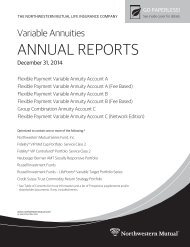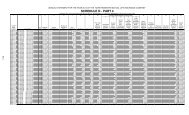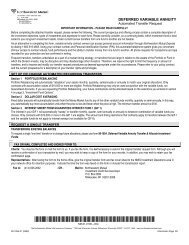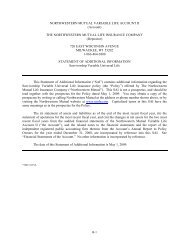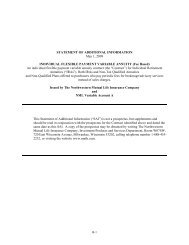. Moody’s Commercial Paper (short-term)Moody’s short-term ratings are opinions of the ability of issuers to honor short-term financial obligations.Ratings may be assigned to issuers, short-term programs or to individual short-term debt instruments.Such obligations generally have an original maturity not exceeding thirteen months, unless explicitlynoted.Moody’s employs the following designations to indicate the relative repayment ability of rated issuers:P-1Issuers (or supporting institutions) rated Prime-1 have a superior ability to repay short-term debtobligations.P-2Issuers (or supporting institutions) rated Prime-2 have a strong ability to repay short-term debtobligations.P-3Issuers (or supporting institutions) rated Prime-3 have an acceptable ability to repay short-termobligations.N PIssuers (or supporting institutions) rated Not Prime do not fall within any of the Prime rating categories.Note: Canadian issuers rated P-1 or P-2 have their short-term ratings enhanced by the senior-most longtermrating of the issuer, its guarantor or support-provider.III. STANDARD & POOR’Sa. Standard & Poor’s Corporate Bonds and Preferred Stock (long-term)Issue credit ratings are based in varying degrees, on the following considerations:• Likelihood of payment—capacity and willingness of the obligor to meet its financial commitmenton an obligation in accordance with the terms of the obligation;• Nature of and provisions of the obligation; and• Protection afforded by, and relative position of, the obligation in the event of bankruptcy,reorganization, or other arrangement under the laws of bankruptcy and other laws affectingcreditors’ rights.The issue ratings definitions are expressed in terms of default risk. As such, they pertain to seniorobligations of an entity. Junior obligations are typically rated lower than senior obligations, to reflect thelower priority in bankruptcy, as noted above. (Such differentiation applies when an entity has both seniorand subordinated obligations, secured and unsecured obligations, or operating company and holdingcompany obligations.) Accordingly, in the case of junior debt, the rating may not conform exactly withthe category definition.AAAAn obligation rated ‘AAA’ has the highest rating assigned by Standard &Poor’s. The obligor’s capacityto meet its financial commitment on the obligation is extremely strong.B-70
AAAn obligation rated ‘AA’ differs from the highest-rated obligations only in small degree. The obligor’scapacity to meet its financial commitment on the obligation is very strong.AAn obligation rated ‘A’ is somewhat more susceptible to the adverse effects of changes in circumstancesand economic conditions than obligations in higher-rated categories. However, the obligor’s capacity tomeet its financial commitment on the obligation is still strong.BBBAn obligation rated ‘BBB’ exhibits adequate protection parameters. However, adverse economicconditions or changing circumstances are more likely to lead to a weakened capacity of the obligor tomeet its financial commitment on the obligation.BB, B, CCC, CC, and CObligations rated ‘BB’, ‘B’, ‘CCC’, ‘CC’, and ‘C’ are regarded as having significant speculativecharacteristics. ‘BB’ indicates the least degree of speculation and ‘C’ the highest. While such obligationswill likely have some quality and protective characteristics, these may be outweighed by largeuncertainties or major exposures to adverse conditions.BBAn obligation rated ‘BB’ is less vulnerable to nonpayment than other speculative issues. However, itfaces major ongoing uncertainties or exposure to adverse business, financial, or economic conditions,which could lead to the obligor’s inadequate capacity to meet its financial commitment on the obligation.BAn obligation rated ‘B’ is more vulnerable to nonpayment than obligations rated ‘BB’, but the obligorcurrently has the capacity to meet its financial commitment on the obligation. Adverse business, financial,or economic conditions will likely impair the obligor’s capacity or willingness to meet its financialcommitment on the obligation.CCCAn obligation rated ‘CCC’ is currently vulnerable to nonpayment and is dependent upon favorablebusiness, financial, and economic conditions for the obligor to meet its financial commitment on theobligation. In the event of adverse business, financial, or economic conditions, the obligor is not likely tohave the capacity to meet its financial commitment on the obligation.CCAn obligation rated ‘CC’ is currently highly vulnerable to nonpayment.CA subordinated debt or preferred stock obligation rated 'C' is currently highly vulnerable to nonpayment.The 'C' rating may be used to cover a situation where a bankruptcy petition has been filed or similaraction taken, but payments on this obligation are being continued. A 'C' also will be assigned to apreferred stock issue in arrears on dividends or sinking fund payments, but that is currently paying.DAn obligation rated ‘D’ is in payment default. The ‘D’ rating category is used when payments on anobligation are not made on the date due even if the applicable grace period has not expired, unlessStandard & Poor’s believes that such payments will be made during such grace period. The ‘D’ ratingalso will be used upon the filing of a bankruptcy petition or the taking of a similar action if payments onan obligation are jeopardized.B-71
- Page 4:
APPENDIX F - Proxy Voting Policies
- Page 9 and 10:
stocks that make up that index. Str
- Page 11 and 12:
Interest rate swaps do not involve
- Page 13 and 14:
the Adviser or Sub-Adviser will not
- Page 17 and 18:
Forward Contracts. The Portfolios m
- Page 19 and 20: principal amount as the call writte
- Page 21 and 22: Options on Foreign Currencies. The
- Page 23 and 24: securities. The issuers of the unde
- Page 25 and 26: the former pools. However, timely p
- Page 27 and 28: CMO residuals are generally purchas
- Page 29: utilize the underlying assets may r
- Page 32 and 33: include range floaters which are a
- Page 34 and 35: par unless the price of the underly
- Page 36 and 37: to changes in interest rates genera
- Page 38 and 39: corresponding floaters. The underly
- Page 40 and 41: A Portfolio will not enter into suc
- Page 42 and 43: egulations. The presence of an issu
- Page 44 and 45: Portfolio TurnoverPortfolio turnove
- Page 46 and 47: The ability of the Portfolio to ach
- Page 48 and 49: Advisors, LLC, in accordance with t
- Page 50 and 51: OWNERSHIP OF SHARES OF THE FUNDAll
- Page 52 and 53: on the next $50 million, 0.50% on t
- Page 54 and 55: Independent Registered Public Accou
- Page 56 and 57: Name of Portfolio 2008 2007 2006Int
- Page 58 and 59: Broker High Yield Bond BalancedAsse
- Page 60 and 61: and cost of trade execution of Port
- Page 62 and 63: Effective April 30, 2008, the Fund
- Page 64 and 65: TAXES AND DIVIDENDSEach Portfolio i
- Page 66 and 67: APPENDIX A - Credit RatingsDescript
- Page 68 and 69: F2Good credit quality. A satisfacto
- Page 72 and 73: Plus (+) or minus (-)The ratings fr
- Page 74 and 75: APPENDIX B - Directors and Officers
- Page 76 and 77: Name, Address, andYear of BirthDavi
- Page 78 and 79: APPENDIX C - Ownership of Shares of
- Page 80 and 81: SMALL CAP VALUE PORTFOLIOGeneral Ac
- Page 82 and 83: APPENDIX D - Portfolio ManagersOthe
- Page 84 and 85: PortfolioManager(s)FundRegisteredIn
- Page 86 and 87: Compensation of Portfolio ManagersM
- Page 88 and 89: management firms. Performance is pr
- Page 90 and 91: Portfolio managers are eligible for
- Page 92 and 93: PortfolioPortfolio Manager(s)Dollar
- Page 94 and 95: On August 25, 2005, the Court enter
- Page 96 and 97: MSA’s Equity Trading Department s
- Page 98 and 99: ERISA ClientsIn the case of client
- Page 100 and 101: Shareholder Ability to Call Special
- Page 102 and 103: • Exercise price• Participation
- Page 104 and 105: Amend Quorum RequirementsVote propo
- Page 106 and 107: Vote proposals to increase blank ch
- Page 108 and 109: employees of Investment Manager and
- Page 110 and 111: will not support the position of a
- Page 112 and 113: company specifies the voting, divid
- Page 114 and 115: egarding whether Investment Manager
- Page 116 and 117: 3. The issuer is an entity particip
- Page 118 and 119: manager(s) are responsible for maki
- Page 120 and 121:
Global Corporate Governance: Invest
- Page 122 and 123:
13. The Proxy Group will review the
- Page 124 and 125:
determined by those investment comm
- Page 126 and 127:
T. Rowe Price has adopted these Pro
- Page 128 and 129:
shareholders and the effect on shar
- Page 130 and 131:
portfolio company could have influe
- Page 132 and 133:
The Proxy Voting Service will refer
- Page 134 and 135:
that substantially differs from dom
- Page 136 and 137:
15. Janus will generally vote in fa
- Page 138 and 139:
46. For shareholder proposals outsi
- Page 140 and 141:
2. Staggered BoardIf a company has
- Page 142 and 143:
proposed for a legitimate business
- Page 144 and 145:
APPENDIX G - Portfolio Holdings Dis
- Page 146:
ICP Securities LLCIntermonte Securi



